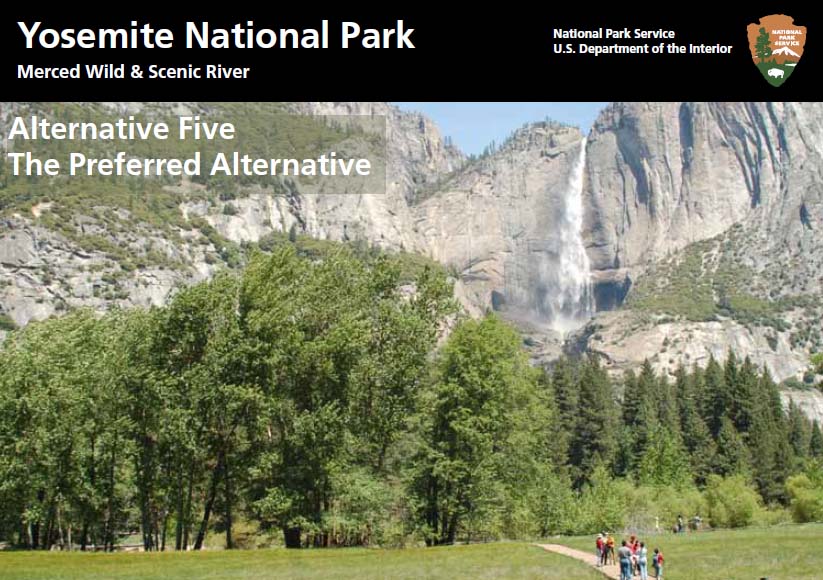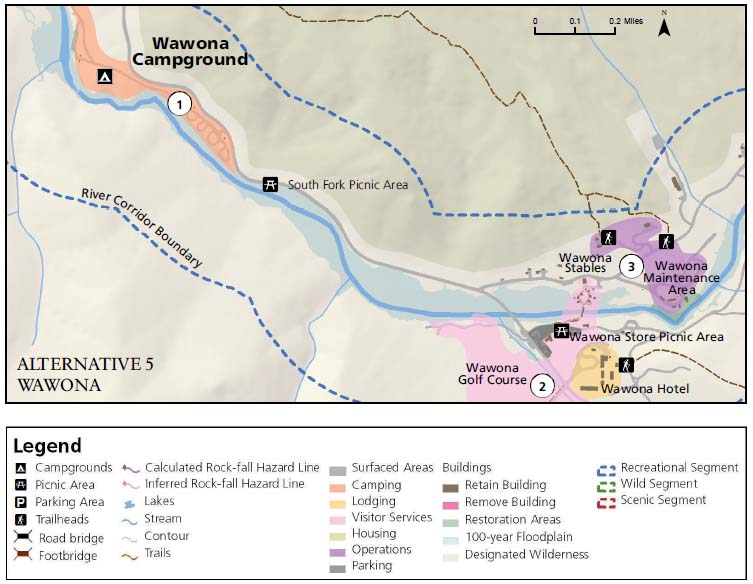WawonaNews.com - February 2013
PG&E Tree Work in Wawona
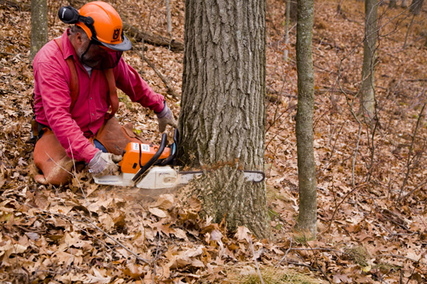
Scott Timber Company will be removing identified hazard trees along PG&E power lines in Wawona District. Please watch for work zones along roadways. (B. Mattos)
What's the difference between a bobcat and a lynx?
by Jennifer Horton
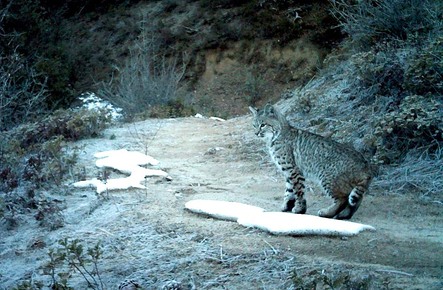
Our 'editorial staff" has been having an interesting discussion on this topic. So here's a section of an article by Jennifer Horton which might shed some light on the confusion.
Taxonomists work in mysterious ways. According to them, everyone on this Earth -- from your tattooed next-door neighbor and his blue-haired girlfriend to devout Buddhists and sherpas on the other side of the world -- belongs to a single species called Homo sapiens. Yet animals that look like near mirror images of each other are grouped as separate species.
Take the bobcat and lynx, for instance. The former is a medium-sized cat with long, tufted ears and a short, bobbed tail, while the latter is, well, a medium-sized cat with long, tufted ears and a short, bobbed tail. Yet they got slapped with different names and assigned to different species. So what gives?
Believe it or not, there's a method to the madness. While bobcats and lynxes are separate species, they do belong to the same genus, which, coincidentally, happens to be the Lynx genus. There are four different species belonging to this group -- three of which share the family name: the Eurasian lynx, the Spanish (or Iberian) lynx and the Canadian lynx. The fourth member, the most common cat native to North America, is the previously mentioned bobcat.
(source: http://science.howstuffworks.com/zoology/mammals/bobcat-vs-lynx.htm)
Taxonomists work in mysterious ways. According to them, everyone on this Earth -- from your tattooed next-door neighbor and his blue-haired girlfriend to devout Buddhists and sherpas on the other side of the world -- belongs to a single species called Homo sapiens. Yet animals that look like near mirror images of each other are grouped as separate species.
Take the bobcat and lynx, for instance. The former is a medium-sized cat with long, tufted ears and a short, bobbed tail, while the latter is, well, a medium-sized cat with long, tufted ears and a short, bobbed tail. Yet they got slapped with different names and assigned to different species. So what gives?
Believe it or not, there's a method to the madness. While bobcats and lynxes are separate species, they do belong to the same genus, which, coincidentally, happens to be the Lynx genus. There are four different species belonging to this group -- three of which share the family name: the Eurasian lynx, the Spanish (or Iberian) lynx and the Canadian lynx. The fourth member, the most common cat native to North America, is the previously mentioned bobcat.
(source: http://science.howstuffworks.com/zoology/mammals/bobcat-vs-lynx.htm)
Mountain lion and lynx on Wawona trail captured on video
Tuolumne Meadows Winter Ranger Report
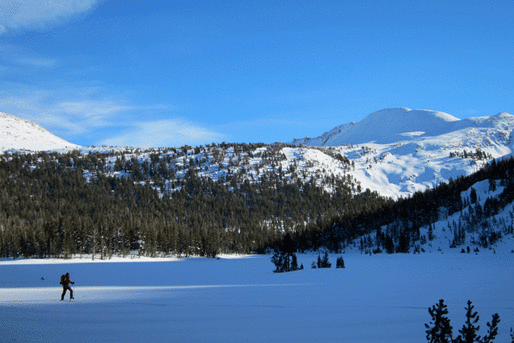
Weather: January 2nd through January 9th
High temp: 55°F (January 8th)
Low temp: -2°F (January 3rd)
New Snow: 4”
Total settled snow depth: 45” as of January 9th
Skiing Conditions and Weather: Ski conditions this week were shaped by windy and warm weather conditions. The thermometer hit 55°F and we had several days of high North East winds. Wind effected snow is now prevalent on most aspects above tree line. There is still soft snow below tree line, though the warm temperatures have confined the good skiing to the North aspects. The snow has settled out during this dry spell and there is still good opportunity for ski touring in the area. The fluctuating temperatures and changing snow conditions make ski wax and scraper necessary items for the backpack.
Avalanche and Snowpack Conditions: For the latest avalanche advisory for this area go to www.esavalanche.org for the Eastern Sierra Avalanche Center and click on advisory. The ESAC site is updated several times a week and more often during weather events.
Triggering isolated wind slabs is still a possibility in the high alpine zone. Wilderness skiers need to use caution when traversing slopes above tree line. Persistent weak layers can still be found in the snowpack, but until they are loaded with new snow they do not pose a hazard.
Wildlife: This week we saw the usual winter residents: Brown Creepers, White Breasted Nuthatches and Clark’s Nutcrackers. The ground critters took advantage of this warm spell by scattering pine cone scales all about in search for some warming calories before next week’s plummeting temperatures.
Questions: The Tuolumne Ski Hut is open for the season. There is an ample supply of firewood and 10 bunks that are available on a first come, first served basis. You can call the Tuolumne Meadows Ranger Station at (209)372-0450. If you leave a message we will get back to you the first chance we get. Power and phones are frequently out of service. Contact the Wilderness Office at (209) 372-0740 with any questions or concerns if you are unable to reach the Ranger Station. Come prepared; don’t count on electricity or phone service at the ski hut. (R. Pilewski)
High temp: 55°F (January 8th)
Low temp: -2°F (January 3rd)
New Snow: 4”
Total settled snow depth: 45” as of January 9th
Skiing Conditions and Weather: Ski conditions this week were shaped by windy and warm weather conditions. The thermometer hit 55°F and we had several days of high North East winds. Wind effected snow is now prevalent on most aspects above tree line. There is still soft snow below tree line, though the warm temperatures have confined the good skiing to the North aspects. The snow has settled out during this dry spell and there is still good opportunity for ski touring in the area. The fluctuating temperatures and changing snow conditions make ski wax and scraper necessary items for the backpack.
Avalanche and Snowpack Conditions: For the latest avalanche advisory for this area go to www.esavalanche.org for the Eastern Sierra Avalanche Center and click on advisory. The ESAC site is updated several times a week and more often during weather events.
Triggering isolated wind slabs is still a possibility in the high alpine zone. Wilderness skiers need to use caution when traversing slopes above tree line. Persistent weak layers can still be found in the snowpack, but until they are loaded with new snow they do not pose a hazard.
Wildlife: This week we saw the usual winter residents: Brown Creepers, White Breasted Nuthatches and Clark’s Nutcrackers. The ground critters took advantage of this warm spell by scattering pine cone scales all about in search for some warming calories before next week’s plummeting temperatures.
Questions: The Tuolumne Ski Hut is open for the season. There is an ample supply of firewood and 10 bunks that are available on a first come, first served basis. You can call the Tuolumne Meadows Ranger Station at (209)372-0450. If you leave a message we will get back to you the first chance we get. Power and phones are frequently out of service. Contact the Wilderness Office at (209) 372-0740 with any questions or concerns if you are unable to reach the Ranger Station. Come prepared; don’t count on electricity or phone service at the ski hut. (R. Pilewski)
The park's preferred alternative for the Merced River Plan
What is a “preferred alternative?”
A preferred alternative is the alternative the NPS believes would best fulfill its statutory mission and
responsibilities, based on the NEPA analysis and a separate value analysis. The preferred alternative is
identified at the time of the draft environmental impact statement, and selected upon adopted of the
final environmental impact statement.
responsibilities, based on the NEPA analysis and a separate value analysis. The preferred alternative is
identified at the time of the draft environmental impact statement, and selected upon adopted of the
final environmental impact statement.
The Preferred Alternative for the Merced River Plan
The Merced River Plan’s Preferred Alternative (Alternative 5) responds to a range of public concerns by
balancing the National Park Service’s mission to protect resources and provide access with public desires
to reduce development and make visitor use more sustainable. The Preferred Alternative identifies a set of
actions that would work together to protect river values while accommodating visitation similar to existing
conditions and providing improved opportunities for day visitors.
balancing the National Park Service’s mission to protect resources and provide access with public desires
to reduce development and make visitor use more sustainable. The Preferred Alternative identifies a set of
actions that would work together to protect river values while accommodating visitation similar to existing
conditions and providing improved opportunities for day visitors.
Yosemite Valley in the Preferred Alternative
Under the Preferred Alternative, 203 acres of habitat would be restored. Significant restoration would
take place in previously disturbed sites. Additional restoration actions would occur throughout the
river corridor to ensure river values remain fully protected and enhanced.
The Preferred Alternative would address traffic congestion and circulation issues by improving
infrastructure to better protect resources and accommodate visitor use levels. One underpass and a
vehicle roundabout would be added to decrease traffic congestion in Yosemite Valley. The Yosemite
Village Day-use Parking Area (Camp 6) would be moved away from the river and Northside Drive
rerouted to improve vehicle and pedestrian circulation. The parking area would be formalized, with the
entrances clearly marked, parking spaces delineated, and bathrooms and picnic areas provided. Park
shuttles would operate at five minute intervals, comfortably accommodating use levels and minimizing
wait time.
A total of 174 new campsites would be added in Yosemite Valley. New campsites would be constructed
at Upper Pines Campground, the former Upper Rivers Campground, Eagle Creek, west of Backpackers
Campground, and Camp 4. At Curry Village, the majority of tent cabins would remain while those
located in the Boys Town area would be replaced with hard sided cabins.
Substandard and temporary employee housing would be replaced with permanent and improved
housing at Yosemite Lodge and near Yosemite Village, at Lost Arrow behind the visitor center, and near
Huff House in Curry Village.
take place in previously disturbed sites. Additional restoration actions would occur throughout the
river corridor to ensure river values remain fully protected and enhanced.
The Preferred Alternative would address traffic congestion and circulation issues by improving
infrastructure to better protect resources and accommodate visitor use levels. One underpass and a
vehicle roundabout would be added to decrease traffic congestion in Yosemite Valley. The Yosemite
Village Day-use Parking Area (Camp 6) would be moved away from the river and Northside Drive
rerouted to improve vehicle and pedestrian circulation. The parking area would be formalized, with the
entrances clearly marked, parking spaces delineated, and bathrooms and picnic areas provided. Park
shuttles would operate at five minute intervals, comfortably accommodating use levels and minimizing
wait time.
A total of 174 new campsites would be added in Yosemite Valley. New campsites would be constructed
at Upper Pines Campground, the former Upper Rivers Campground, Eagle Creek, west of Backpackers
Campground, and Camp 4. At Curry Village, the majority of tent cabins would remain while those
located in the Boys Town area would be replaced with hard sided cabins.
Substandard and temporary employee housing would be replaced with permanent and improved
housing at Yosemite Lodge and near Yosemite Village, at Lost Arrow behind the visitor center, and near
Huff House in Curry Village.
Wawona
The Preferred Alternative would provide for similar kinds and amounts of use that currently occur in
Wawona. The Wawona Hotel National Historic Landmark would remain at its current capacity of 104
rooms. The existing public restrooms next to the Wawona Store would be replaced with larger restrooms
to accommodate current visitor-use levels. An increase in the number of picnic tables would
accommodate more picnicking.
The Wawona campground would retain 84 campsites. Thirteen campsites would be removed from
within 100 feet of the river and other culturally sensitive areas. The two stock camp sites would be relocated
to protect cultural resources.
Wawona Golf Course and Golf Shop:
Retain nine-hole golf course and retail and food service at golf shop.
Wawona Stables Area and Maintenance Yard:
• Stables Operation: Retain stables and commercial day rides.
• Stock-Use: Campsites: Relocate two stock-use campground sites away from sensitive resource areas to an appropriate location within the Wawona Maintenance Yard area.
Wawona. The Wawona Hotel National Historic Landmark would remain at its current capacity of 104
rooms. The existing public restrooms next to the Wawona Store would be replaced with larger restrooms
to accommodate current visitor-use levels. An increase in the number of picnic tables would
accommodate more picnicking.
The Wawona campground would retain 84 campsites. Thirteen campsites would be removed from
within 100 feet of the river and other culturally sensitive areas. The two stock camp sites would be relocated
to protect cultural resources.
Wawona Golf Course and Golf Shop:
Retain nine-hole golf course and retail and food service at golf shop.
Wawona Stables Area and Maintenance Yard:
• Stables Operation: Retain stables and commercial day rides.
• Stock-Use: Campsites: Relocate two stock-use campground sites away from sensitive resource areas to an appropriate location within the Wawona Maintenance Yard area.
Wilderness
Under the Preferred Alternative, river-related systems would continue to be sustained through natural
ecological processes, and recreational opportunities in Wilderness would be primitive and unconfined.
Restoration actions to correct past effects from human and pack stock use would occur to ensure the
river and its resources remain fully protected. The overnight quota for backpacker camping in wild
segments would remain at present levels of 450 persons per night.
The Merced Lake High Sierra Camp would continue to offer the opportunity for visitors to connect
with the river in a remote setting and would retain its historic character; however, the capacity would be
reduced from 60 to 42 guests per night, which would bring Merced Lake High Sierra Camp’s capacity
in line with other High Sierra Camps such as Vogelsang. Composting toilets would replace flush toilets
to reduce demand for water use and waste disposal.
ecological processes, and recreational opportunities in Wilderness would be primitive and unconfined.
Restoration actions to correct past effects from human and pack stock use would occur to ensure the
river and its resources remain fully protected. The overnight quota for backpacker camping in wild
segments would remain at present levels of 450 persons per night.
The Merced Lake High Sierra Camp would continue to offer the opportunity for visitors to connect
with the river in a remote setting and would retain its historic character; however, the capacity would be
reduced from 60 to 42 guests per night, which would bring Merced Lake High Sierra Camp’s capacity
in line with other High Sierra Camps such as Vogelsang. Composting toilets would replace flush toilets
to reduce demand for water use and waste disposal.
Find Out More
If you’re interested in learning more about the Merced Wild and Scenic River Draft Comprehensive
Management Plan and Environmental Impact Statement, you can download the entire document at
www.nps.gov/yose/parkmgmt/mrp-deis.htm. For those that have the time, reading the entire document
will convey the fullest understanding of the plan. For those interested in an overview of the Merced
River Plan, park staff suggest you begin with:
• Summary Guide for the Merced Wild and Scenic River Draft Comprehensive Management Plan/
DEIS
• These sections of Chapter 8: Alternatives:
o Actions Common to Alternatives 2-6
o Overview section of Alternatives 2-6 (includes map series for each alternative)
o Full narrative for Alternative 5 (Preferred Alternative)
Management Plan and Environmental Impact Statement, you can download the entire document at
www.nps.gov/yose/parkmgmt/mrp-deis.htm. For those that have the time, reading the entire document
will convey the fullest understanding of the plan. For those interested in an overview of the Merced
River Plan, park staff suggest you begin with:
• Summary Guide for the Merced Wild and Scenic River Draft Comprehensive Management Plan/
DEIS
• These sections of Chapter 8: Alternatives:
o Actions Common to Alternatives 2-6
o Overview section of Alternatives 2-6 (includes map series for each alternative)
o Full narrative for Alternative 5 (Preferred Alternative)
Tell the park administration what you think
Comment on this draft environmental impact statement by visiting the Merced River Plan Planning,
Environment, and Public Comment (PEPC) website at http://parkplanning.nps.gov/mrp_deis. Electronic
comment submittal through PEPC saves resources and allows for direct entry to the NPS comment
analysis system. Comments can also be submitted by email to [email protected] or by U.S. mail at
the following address:
Superintendent
Yosemite National Park
Attn: Merced River Plan
P.O. Box 577
Yosemite, CA 95389
Or submit your comments online by clicking on this button:
Environment, and Public Comment (PEPC) website at http://parkplanning.nps.gov/mrp_deis. Electronic
comment submittal through PEPC saves resources and allows for direct entry to the NPS comment
analysis system. Comments can also be submitted by email to [email protected] or by U.S. mail at
the following address:
Superintendent
Yosemite National Park
Attn: Merced River Plan
P.O. Box 577
Yosemite, CA 95389
Or submit your comments online by clicking on this button:
